Occupational Safety Training in the Cosmetic Surgery Industry
99,000 ₫
Note: The above price is calculated for one person, the price may fluctuate depending on the number of trainees participating in the course and the dynamics of the market. For more accurate price support, please refer to the quotation table or contact our consulting staff directly.
Occupational safety training in the cosmetic surgery sector is a course that provides knowledge on identifying and preventing hazards when performing surgical interventions on individuals seeking aesthetic procedures.
Table of Contents
Toggle1. Overview of the Cosmetic Surgery Industry
b. What is the Cosmetic Surgery Industry?
It is the field focused on changing and improving a person’s appearance from unattractive to attractive. Cosmetic surgery and reconstructive surgery are often confused. However, cosmetic surgery is only a small branch of reconstructive surgery. Cosmetic surgery is a surgical specialty related to restoring, reconstructing, or altering the human body. It can be divided into two categories:
- The first is reconstructive surgery, which includes cranial surgery, hand surgery, microsurgery, and burn treatment.
- The second is cosmetic surgery.
While reconstructive surgery aims to restructure a body part or improve its function, cosmetic surgery aims to enhance appearance. Both techniques are used worldwide.
Cosmetic surgical procedures are becoming increasingly popular, and the demand for surgery continues to rise. However, cosmetic surgery and related procedures must be carefully considered, as their results are often difficult or impossible to reverse.
b. Equipment and Instruments for Cosmetic Surgery
a. Color camera system with a light sensitivity of 1–5 lux, high resolution, capturing images in the abdominal cavity via a lens transmitted through a fiber optic cable to a central processing unit. The images are displayed on a high-definition monitor (approximately 14 or 20 inches). Recording devices (video cassette, CD, or DVD) are used to document surgical cases for scientific research, etc.

b. Cold light source with Halogen or Xenon lamps, 150–300W, providing light to the laparoscope via a fiber optic cable.

c. Electrosurgical unit with cables connected to surgical instruments, allowing for dissection, cutting, and coagulation simultaneously.

d. Veress needle with spring-loaded mechanism to protect the tip from puncturing the intestines when inserted through the abdominal wall.

e. 5mm and 10mm trocars for penetrating the abdominal wall – equipped with protective valves – to insert surgical instruments into the abdominal cavity.

f. Sterile surgical scalpels must be sterilized and individually covered, protecting the blade until use. This ensures safety and prevents bacterial contamination.
Surgical scalpels are commonly used by surgeons. They are compatible with separate handles, which must be purchased separately. Selection of the scalpel handle and blade depends on purpose and technical specifications.

g. Surgical scissors come in various sizes and shapes, such as curved or straight medical scissors, all made from durable stainless steel.
Scissors are representative of cutting surgical instruments. Depending on tissue type and location, different lengths and shapes are used. Curved double-pointed scissors are made from solid stainless steel, with sharp curved tips suitable for eye surgery or cutting sutures. They can also be used with antiseptics for wound disinfection before surgery.

h. Surgical forceps for grasping (grasper), tissue dissection (dissector), scissors, hooks, suction tubes, etc. Most of these instruments can connect to electrosurgical units to dissect and coagulate simultaneously.

i. Endoloop is a plastic rod with a suture (Chromic 1–0 or Vicryl 1–0) used to ligate blood vessels or tissues (appendix, bile duct, mesentery, etc.).

c. Prominent Companies in Cosmetic Surgery
Prominent companies in the cosmetic surgery industry include:
- National Dermatology Hospital: The largest and most reputable hospital in Vietnam for cosmetic surgery. It has leading specialists trained domestically and abroad, along with modern medical equipment.
- FV Hospital: One of the top general and rehabilitation hospitals in Vietnam. With leading specialists, FV Hospital provides high-end cosmetic surgery services.
- Kangnam Cosmetic Hospital: Specializes in cosmetic surgery, dermatology, and non-surgical aesthetics. Services include rhinoplasty, breast augmentation, eyebrow aesthetics, skin rejuvenation, whitening, and pigmentation removal.
- National ENT Hospital: Specializes in ear, nose, and throat surgery, including cosmetic ENT procedures, with top specialists and modern medical equipment.
- JW International Cosmetic Hospital: Specializes in cosmetic surgery, offering comprehensive services from rhinoplasty, breast augmentation, dental aesthetics, body shaping to non-surgical cosmetic procedures, equipped with modern medical devices and leading specialists.
d. Specific Jobs in Cosmetic Surgery
Specific jobs in cosmetic surgery include:
- Cosmetic surgeons: Responsible for performing surgeries to improve patients’ appearance and health, from simple procedures like Botox or fillers to complex surgeries such as rhinoplasty, breast augmentation, or liposuction.
- Physician assistants: Assist surgeons throughout procedures, including preparing instruments, supporting the surgeon, and helping avoid risks during surgery.
- Consultants: Help clients understand cosmetic surgery services, explain procedures and regulations, and provide guidance on post-surgery care and health protection.
- Customer care specialists: Support clients throughout service use, ensure proper care and post-surgery health protocols, and respond to inquiries and feedback.
2. Overview of Occupational Safety Training for Cosmetic Surgery
a. What is Occupational Safety Training for Cosmetic Surgery?
- Occupational safety training for cosmetic surgery consists of sessions that equip workers with awareness of workplace accident prevention. Workers in the cosmetic surgery field belong to Group 3.
- The training helps workers identify and avoid hazards, reducing the risk of occupational accidents during work.
REGISTER FOR OCCUPATIONAL SAFETY TRAINING SERVICE
b. Training Duration
Initial Safety Training Duration
- Total training duration is at least 24 hours, including examination time.
- 8 hours of theoretical study on policies and labor safety regulations
- 8 hours of theoretical study on basic occupational safety knowledge
- 4 hours of theoretical study on specialized training content
- 2 hours of practical training on specialized content
- 2 hours of theoretical examination at the end of the course
The safety training center schedules multiple sessions depending on worker availability. Typically, there are 6 sessions over 3 days, provided the company arranges continuous learning time.
Periodic Safety Training Duration
- Before the occupational safety card expires, workers must undergo periodic occupational safety training, with duration at least 50% of the initial training.
Explanation: The total duration of periodic training is at least 12 hours, including examination time. Upon completion and passing the test, workers will have their occupational safety card renewed.
c. Training Content
Workers in cosmetic surgery or medical environments belong to Group 5 occupational safety training.
The Group 5 or medical industry training program includes the following:
| No. | TRAINING CONTENT | TRAINING DURATION (HOURS) | |||
| Total | Including | ||||
| Theory | Practice | Examination | |||
| I | Policies and labor safety regulations | 8 | 8 | 0 | 0 |
| 1 | Overview of legal documents system on occupational safety. | 6 | 6 | ||
| 2 | Standards and technical regulations on occupational safety. | 1 | 1 | ||
| 3 | Specific regulations of state management agencies on occupational safety when building, expanding, or renovating facilities, equipment, or materials with strict safety requirements. | 1 | 1 | ||
| II | Basic knowledge of occupational safety | 8 | 8 | 0 | 0 |
| 1 | Basic knowledge of hazards in the workplace. | 4 | 4 | ||
| 2 | Methods to improve working conditions. | 1 | 1 | ||
| 3 | Safety culture in production and business. | 1 | 1 | ||
| 4 | Rights and obligations of employers and employees; safety policies; roles of safety officers. | 1 | 1 | ||
| 5 | Safety rules, signage, use of safety equipment, first aid, and occupational disease prevention. | 1 | 1 | ||
| III | Specialized training content | 6 | 4 | 2 | 0 |
| Comprehensive knowledge of equipment, hazardous materials, risk analysis, occupational safety management, and safe work procedures. | 6 | 4 | 2 | ||
| IV | Final examination | 2 | 2 | 0 | 0 |
| Total | 24 | 22 | 2 | ||
See details about Group 5 training content
d. Occupational Safety Training Certificate
After completing the occupational safety training course and passing the test, workers will be issued a Group 3 occupational safety certificate.
The safety card shows information such as full name, date of birth, job position, and specific work environment. It also displays training duration, a red stamp, and a signature confirming course completion.
According to the regulations in Clause 2 of Article 24 of Decree 44/2016/ND-CP, there are two cases:
- If the employer and employee have a labor contract, the employer must sign, stamp, and authenticate the safety card for Group 3 trainees after completing training and passing the test.
- If the worker is freelance or temporary, without a labor contract, the training unit must sign, stamp, and authenticate the safety card after the worker completes training and passes the test.

3. Factors Influencing Occupational Safety
- Self must comply with regulations, internal rules, procedures, and occupational safety and hygiene requirements set by the employer or competent state authorities related to assigned tasks and duties.
- Patients must be conscious of following doctors’ instructions during medical examinations and treatments.
- Colleagues should cooperate and respect each other during medical examinations and treatments, protecting the dignity and reputation of their peers.
- Work environment should be clean, hygienic, and ergonomically designed for employee comfort.
- Machinery, equipment, supplies, and chemicals must have strict control procedures, regular maintenance, and monitoring.
- Air and water must be hygienic and ensure health safety.
4. Identifying Hazards in Cosmetic Surgery
Doctors are highly respected professionals in society, particularly surgeons and cosmetic surgeons, who not only excel in expertise but also in technical and procedural skills. They are surgical experts in healthcare, but during their work, they inevitably face hazards that may directly affect their health. Below are some potential hazards in cosmetic surgery:
a. Hazards for healthcare staff
- Risk of hand cuts while using surgical instruments.
- Prolonged exposure to medical waste can cause skin diseases or internal organ toxicity.
- Incorrect use of medical machinery can cause physical collisions or accidental radiation exposure.
- Electrical systems in the hospital or operating rooms may deteriorate over time, causing electric shocks.
- Oxygen cylinders can explode due to internal pressure if not properly stored and handled.
- Physical impact from patients or their family members under unstable psychological conditions.
b. Health hazards for medical staff
- Infection from exposure to biological agents during medical procedures.
- Poor working posture maintained for long periods may cause musculoskeletal disorders.
- Excessively bright or dim lighting in operating rooms can affect the surgeon’s vision.
- Allergic reactions to drugs or chemicals during storage and handling.
c. Risks for patients
There are always certain risks associated with any invasive surgery, including cosmetic procedures. Potential patient safety hazards include:
- Anaphylactic shock after administration of supplementary drugs for surgery.
- Insufficient medical staff during surgery may lead to delayed responses.
- Misplacement of medical instruments may delay responses during surgery.
5. Safety Measures in Cosmetic Surgery
Not everyone can predict the consequences of a cosmetic surgery. All surgeries, including cosmetic procedures, carry risks. Small mistakes or lack of awareness in healthcare can have serious consequences for both doctors and patients. However, there are safety measures to minimize hazards during cosmetic surgery:
- Wear full protective gear before surgery.
- Medical machinery and equipment must undergo regular inspections.
- Do not exceed the regulated working hours.
- Medical staff must have periodic health checks to ensure appropriate care.
- Occupational safety training for medical staff periodically.
- Regular maintenance of electrical systems in the hospital and functional rooms.
- Follow proper protocols for storing and handling drugs and chemicals safely.
- Be courteous with patients and their families to avoid psychological agitation leading to unnecessary conflicts.
- Plan the surgery safely and thoroughly several days in advance.
- Verify machinery and equipment functionality before surgery.
- Prepare all medical instruments and drugs in advance of the surgery.
- Doctors and medical staff must ensure they are mentally and physically fit before surgery.
- Ensure adequate medical staff for each surgery to respond promptly to any incidents.
- Periodically conduct workplace environmental monitoring in hospitals, collecting and analyzing harmful factors, then adjusting to reduce hazards and prevent occupational diseases.
6. Causes of Occupational Accidents in Healthcare
All work environments have inherent risks of occupational accidents. Understanding the causes helps prevent and minimize hazards. The main causes include:
- Poor organization, management, and workforce allocation in examination, treatment, and healthcare activities.
- No established procedures for operation, maintenance, and repair for the hospital and specific medical staff.
- Lack of planning, design, and layout of the hospital workspace.
- Workers not being physically or mentally fit for medical duties.
- No occupational safety and hygiene training or personal protective equipment training.
- Poor safety awareness and behavior of staff.
- Medical machinery and equipment pose potential accident hazards.
- Poor workstation design relative to medical equipment placement in the hospital.
- Damaged machine parts can cause harm to medical staff.
- No installation of signs, instructions, or necessary information in the hospital area.
7. Benefits of Occupational Safety Training in Cosmetic Surgery
An Toan Nam Viet provides enterprises with the following benefits after completing occupational safety training courses according to Decree 44/2016/ND-CP on Occupational Safety and Hygiene for companies and enterprises:
- Workers can identify potential occupational hazards and take preventive measures to avoid accidents.
- Enterprises can establish risk prevention measures in production, operation, and maintenance processes.
- Reduce costs associated with workplace safety risks.
- Continuous production processes enhance labor productivity and product quality.
- Ensure compliance with occupational safety laws, avoiding legal risks.
- Enhance credibility and professionalism, improving the enterprise’s brand.
Nam Viet’s training courses are solutions to prevent external hazards from impacting individuals, helping them avoid injuries or, in severe cases, fatalities.
REGISTER FOR OCCUPATIONAL SAFETY TRAINING SERVICES
8. Customer Feedback After Completing Training
An Toan Nam Viet has many years of experience accompanying enterprises in Vietnam, particularly in southern provinces. This responsibility is invaluable, which is why our Occupational Safety Training is increasingly professional. The growth of An Toan Nam Viet is driven by positive feedback and suggestions from businesses. Below are testimonials from our partners.
Bac Nam E&C Investment and Construction Joint Stock Company
“My first experience using An Toan Nam Viet’s service was impressive due to the 24/7 support from the consulting team. Organizing the class was quick and convenient for our company. Thank you very much for your service!”
Hoa Dat Construction and Trading Joint Stock Company
“Nam Viet’s service greatly helped simplify occupational safety and complete safety documentation for our work process. The consulting team responded promptly and enthusiastically to our questions. Five stars for Nam Viet.”
See more customer interviews after using the service by An Toan Nam Viet
9. Occupational Safety Training Capability of An Toan Nam Viet
An Toan Nam Viet is a reputable and high-quality occupational safety training center in Vietnam. Our training sessions are conducted continuously at production workshops, factories, and construction sites across all 63 provinces in Vietnam.
REGISTER FOR OCCUPATIONAL SAFETY TRAINING SERVICES
Occupational Safety Training License
- An Toan Nam Viet has been inspected and certified by the Department of Occupational Safety under the Ministry of Labor, Invalids and Social Affairs, granting the certificate for eligibility to conduct occupational safety and hygiene training. This further strengthens our capability in occupational safety training.

Training Materials and Lectures
- Before being used in occupational safety training courses, all materials are reviewed and approved to ensure accuracy and effectiveness when applied.
- Our instructors’ teaching methods follow An Toan Nam Viet standards, developed and refined by experts in occupational safety and hygiene training to maximize knowledge retention for trainees.
Facilities
- Controlling factors in the classroom that affect training enhances teaching efficiency and knowledge retention.
- Our training facilities are spacious and meet standards for area, lighting, training equipment, etc.
10. Nationwide Reputable Occupational Safety Training Center
At An Toan Nam Viet, we prioritize the professionalism of occupational safety training. We are committed to equipping workers with knowledge to protect themselves, contributing to national development.
To ensure effective training, we meticulously prepare every detail, from tools, equipment, and teaching aids to curricula, materials, audio, and lighting.
Our instructors are experts with many years of experience. They have even conducted research to identify hazards in various industries and how to prevent them.
Lectures are based on practical experience and delivered in an engaging, easy-to-understand manner, allowing workers to learn comfortably while absorbing knowledge effectively. The content always aligns with Decree 44/2016/ND-CP.
This enables trainees to understand hazard prevention methods and self-protection measures, applying them effectively in their work.
Our training center proudly provides professional and reliable occupational safety training with the following advantages:
- Competitive training costs while maintaining high-quality instruction.
- Flexible training schedules suitable for company production timelines.
- Quick certification procedures compliant with legal regulations.
- Experienced and professional instructors.
- Controlled classroom environment enhances teaching efficiency and knowledge retention.
- Lectures are tailored to occupational safety requirements in enterprises.
- An Toan Nam Viet provides dedicated and professional support for customers efficiently and accurately.

11. Additional References for Occupational Safety Training in Cosmetic Surgery
- Occupational Safety Training Materials Group 5
- Occupational Safety Training Test Group 5
- Occupational Safety Materials for Cosmetic Surgery Industry
- Slides for Occupational Safety Training in Cosmetic Surgery Industry
10 reviews for Occupational Safety Training in the Cosmetic Surgery Industry
No comments yet

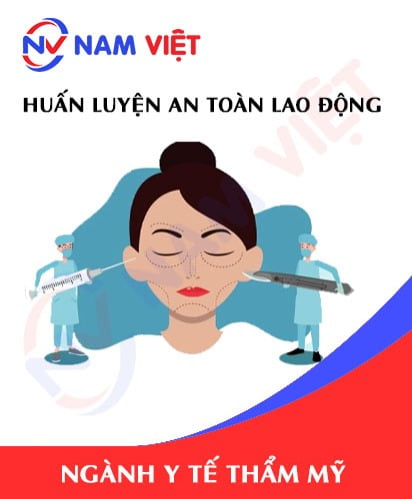





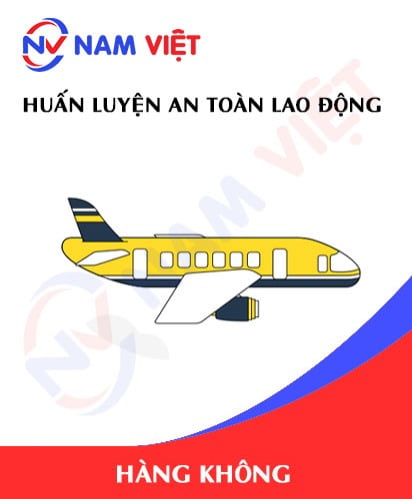
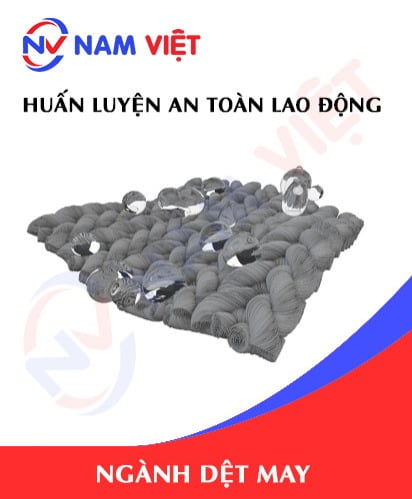
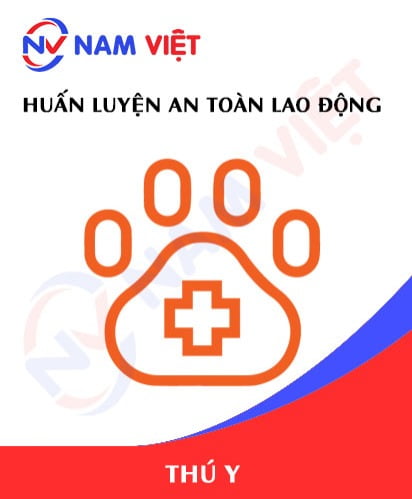
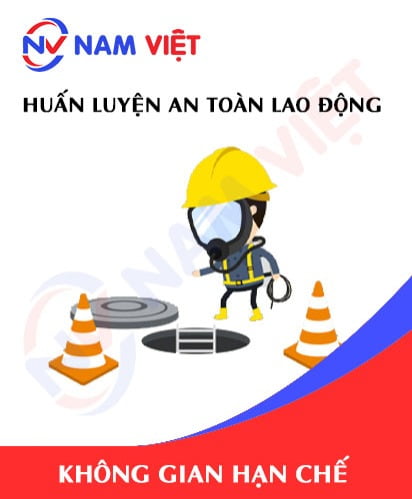
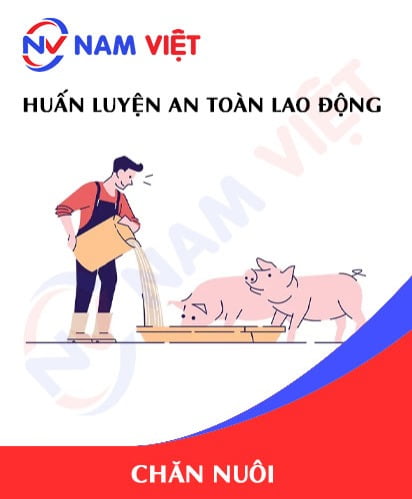
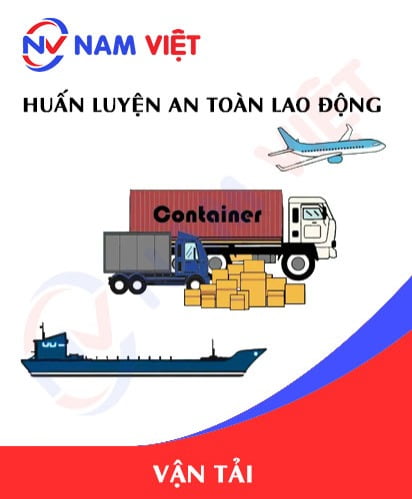
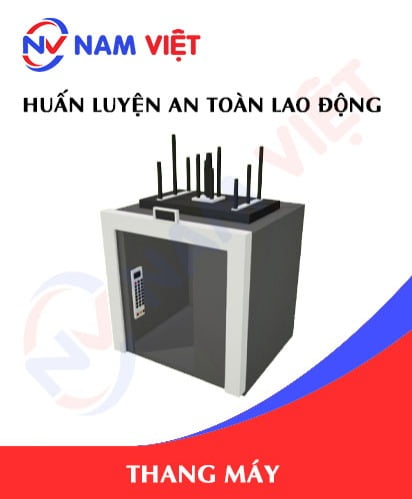
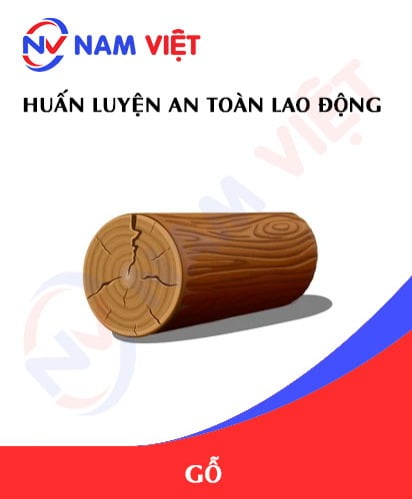
huynhtran_dathien22
Sự đóng góp tích cự của Nam Việt cho an toàn lao động tại Việt Nam là không thể chối cãi. An Toàn Nam Việt đã trao món quà về sức khỏe lao động cho công nhân của chúng tôi, để họ có thể bảo vệ bản thân mình. Thay mặt Anh/Chị/Em công nhân, tôi gửi lời cảm ơn đến công ty Nam Việt rất nhiều.
hoangxuanloc_kentai
tổ chức rất nhanh và đúng giờ, thầy dạy an toàn rất có tâm
kendy_trannguyen_land
Dịch vụ An Toàn Nam Việt rất tuyệt vời!. Các bạn đã hỗ trợ công ty của chúng tôi rất tận tình và chu đáo
tinaxuanquynh_saigon
Tư vấn rất sâu sắc, giúp tôi giải quyết những khó khăn về chuyên môn trong lĩnh vực huấn luyện an toàn.
huynhdanhstanley241
Giảng viên giảng rất hay, có lẽ thầy cũng lớn tuổi rồi nên nhiều kinh nghiệm.
quythu_duanuong
Khóa huấn luyện ok lắm!
xingfutan7_dongnai
trung tâm huấn luyện an toàn rất uy tín, tận tâm tư vấn.
vanhieutran2306
Bài giảng của thầy rất tuyệt vời, ngồi nghe mà lôi cuốn lắm nha. Công tác tổ chức lớp học cũng chu đáo nữa, nếu lần sau mà tôi có nhu cầu huấn luyện an toàn chắc chắn tôi sẽ tìm đến Nam Việt.
hoamaicontrusterdn
Nam Việt tư vấn cho tôi rất nhiệt tình, giải đáp thắc mắc của tôi một cách chu đáo. Về điều này thôi là đã muốn sử dụng dịch vụ của trung tâm huấn luyện rồi.
kytucxathienhuong
Nhanh chóng và rất chu đáo, bên Nam Việt tổ chức khóa huấn luyện khiến tôi rất hài lòng, cho 5 sao luôn!